Yes, some fruits are going extinct! It seems unlikely given the array we’re presented with in stores, but since monoculture became the dominant way to grow our food, extinct fruits are increasingly common. Experts think we only have a small fraction of plants and fruits compared to even 100 years ago.
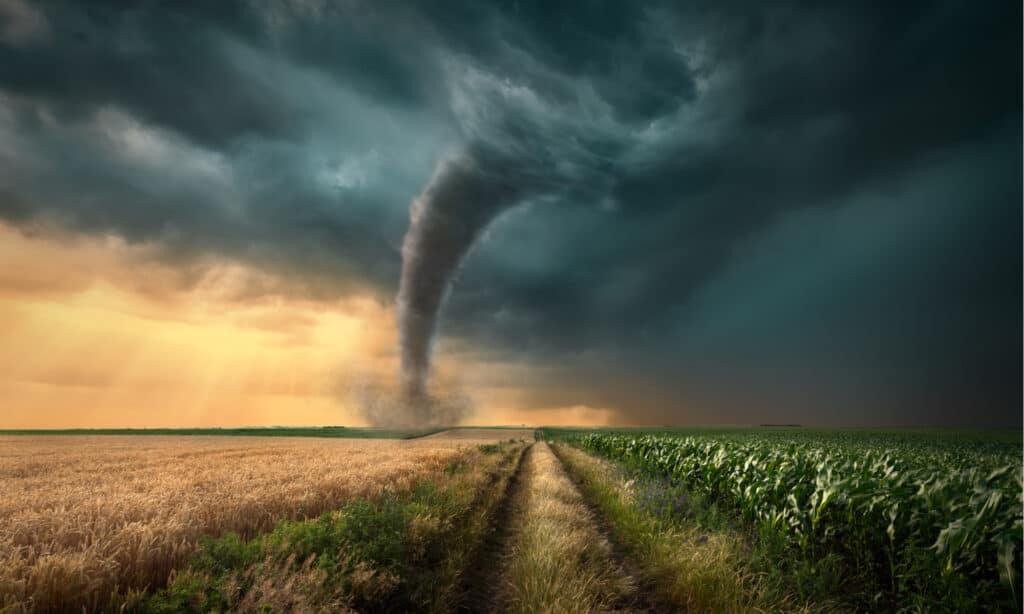
Monocrop wheat fields are grown instead of fruit varieties as it’s more profitable for farmers, leading fruits to become extinct.
©Rasica/Shutterstock.com
Here are 7 extinct fruits and what botanists think happened to make them die out.
1. Ansault Pear
The Ansault pear was famous for its buttery taste and delicate scent. It was cultivated in Angers, France in 1863 and was so delicious The Pears of New York book described it as “fruit of the highest quality.”
Ansault pears are extinct fruit because they weren’t reliable growers. Trees were irregular and didn’t always produce edible pears. When commercial farming industrialized, ansault pear trees just weren’t reliable enough to bring farmers a steady income. Orchards were a problem, too. Compared to vast fields of wheat, fruit orchards were just not profitable enough.
Ansault pears were replaced with more reliable pear species and became extinct in the early 20th century.
However, it could be that the odd ansault pear tree lives on in old private orchards and yards.

The Ansault pear was similar in color to the common yellow-green pear.
©JoannaTkaczuk/Shutterstock.com
2. Taliaferro Apple
Taliaferro apples were cultivated by Thomas Jefferson at his 5,000-acre Monticello estate just outside Charlottesville, Virginia. He is reported to have stated that they made “unquestionably the finest cyder we have ever known.”
This apple wasn’t grown commercially and didn’t make it far from the original orchard. Fruit experts think it died out in the original estate’s orchard.
Like the Ansault pear, it might not be entirely extinct, but the chances are slim it’ll ever end up on a dinner table or in a glass of cider.
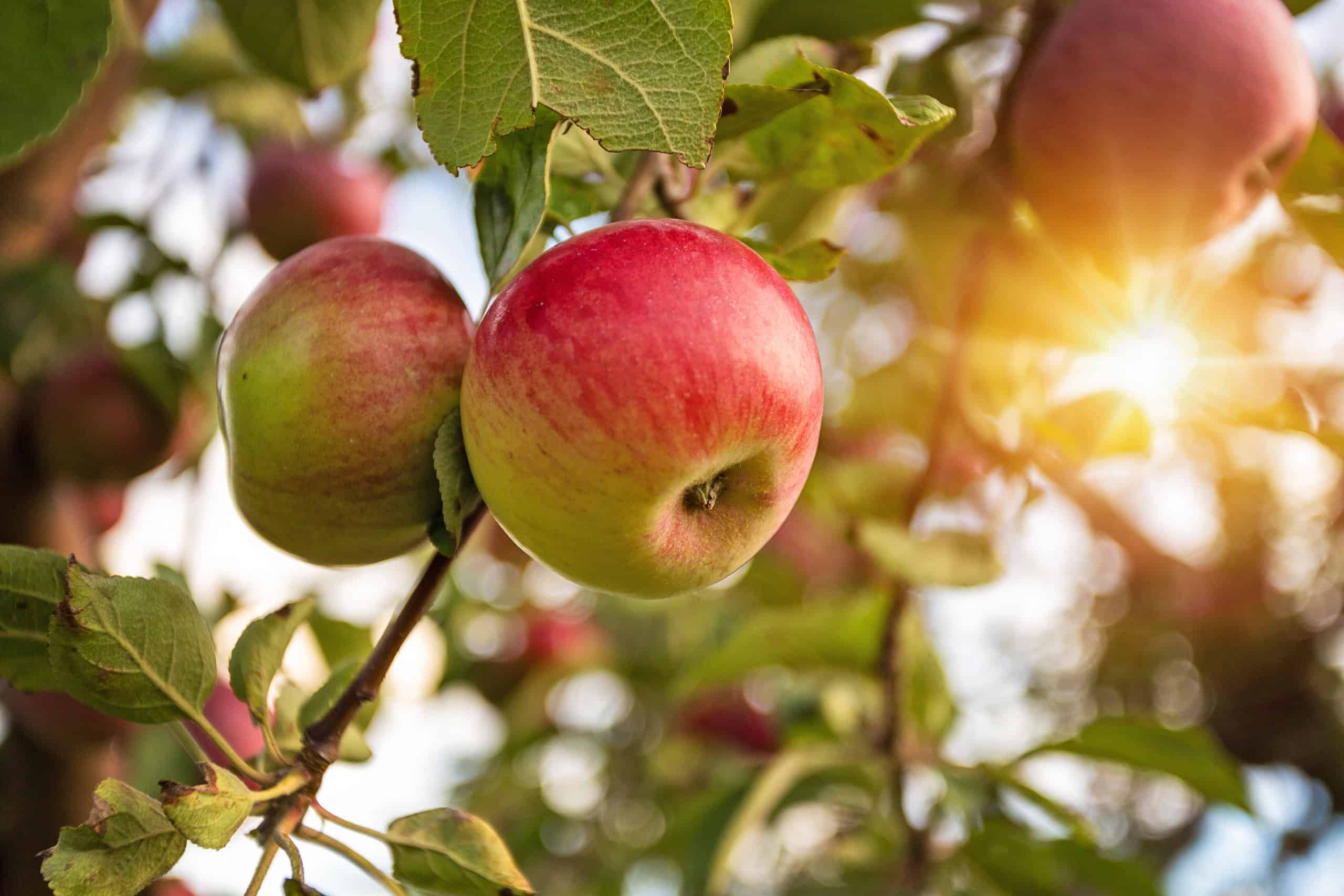
The Taliaferro Apple was white with red streaks but didn’t do as well as regular varietals, shown here.
©Romiana Lee/Shutterstock.com
3. Madagascar Banana
This wild banana isn’t quite extinct yet, but it’s critically endangered. Madagascar bananas are related to the Cavendish banana that we eat across the United States and Europe, and one of Ethiopia’s most important food crops, the Abyssinian banana.
Deforestation and climate change are the reasons this banana is virtually extinct. It’s not grown commercially, and its habitat is under threat. Experts think it’s only a short matter of time before this banana variety disappears forever.

The Madagascar banana is nearly extinct due to deforestation and climate change.
©e2dan/Shutterstock.com
4. Murray’s Plum
Murray’s plum, Prunus murrayana, was a wild plum only found in the Edwards Plateau and trans-Pecos areas of Texas. It was discovered in 1928 but no one has seen one since then. It’s listed as critically endangered but considered extinct because recent surveys haven’t found any.
If you want to go looking, it was a thorny shrub that reached 17 feet tall with hairy leaves. White flowers matured to red plums with white dots.
5. Judean Date Palm
This date was a staple food. It grew around the Dead Sea, the Sea of Galilee, and the Hula Valley in Israel.
Date palm fruits are still eaten today, but it’s thought the Judean strain became extinct due to climate change. The areas it grew in became gradually drier and because dates are water-intensive it became too difficult to grow them.
But in 2005 botanists sprouted a 2000-year-old Judean date palm seed! It was the oldest seed ever sprouted with human help. Scientists have sequenced its genomes and compared them with modern varieties to understand how date palms evolved.

Judean date palms grew near the Dead Sea, Galilee, and the Hula Valley in Israel.
©iStock.com/vvvita
6. Kalimantan Mango
Kalimantan mango (Mangifera casturi), also called Kasturi, was a species of mango endemic to Kalimantan, Borneo. It was one of 31 varieties and a mascot for the South Kalimantan province. This fruit is somewhat different than the previously listed extinct fruit as it’s not completely extinct.
This mango tree could grow to 25 meters tall and it had long purple foliage when it was young. It’s been listed as extinct in the wild since 1998, however, it is still cultivated in Borneo in private. The almost-extinct mango fruits were smaller than the type we see in supermarkets. It weighed 2.82 ounces (80 grams), had thin speckled skin, and more fiber too.
Currently, the use of Kalimantan mango trees, and their fruit, are limited and are not for sale in markets due to the limited availability.
It’s thought the Kalimantan mango became extinct in the wild due to mass deforestation for mining and palm oil production.
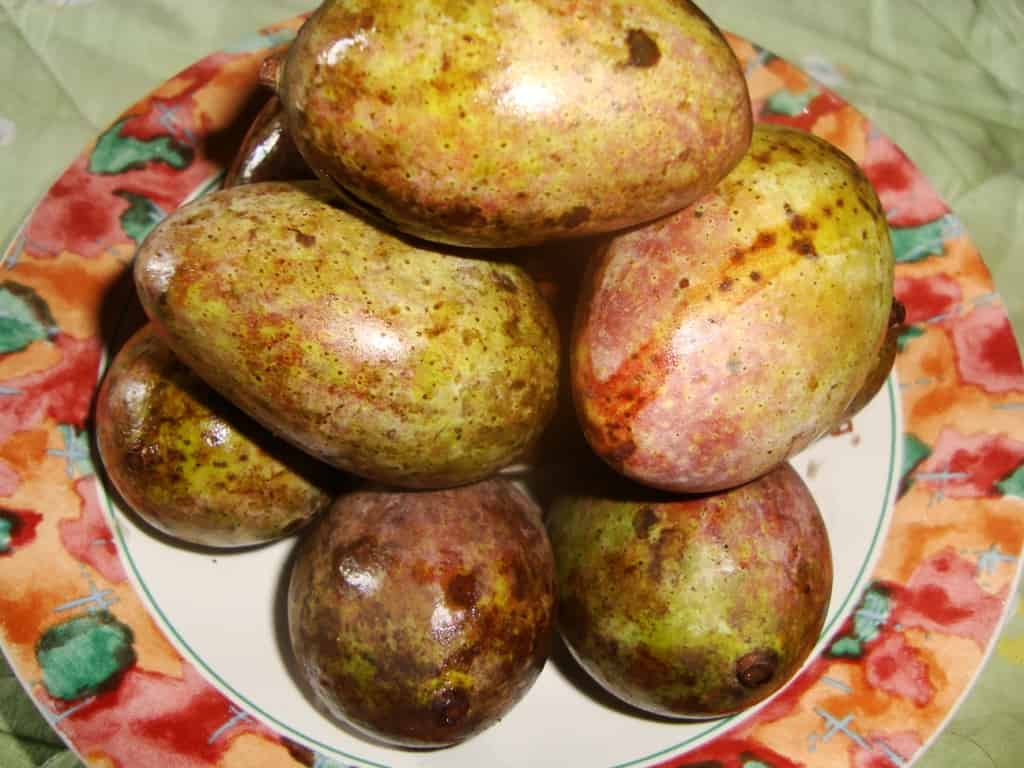
Kalimantan mango was endemic to the Kalimantan region of Borneo but is now considered extinct in the wild.
©KPR, Public Domain – License
7. Jamaican Guava
Jamaican guavas are still with us today — they are tasty, juicy fruit with lots of flavors — but there’s a certain species that’s quietly gone extinct.
It was called the Psidium dumetorum or sometimes the Jamaican Psidium. It was part of the Myrtaceae family and endemic to Jamaica. The last known wild plant was recorded in 1976 in a streamside thicket in Clarendon, Jamaica.
None have been found since so it is considered extinct, but it’s possible private gardens contain the last few species in existence.
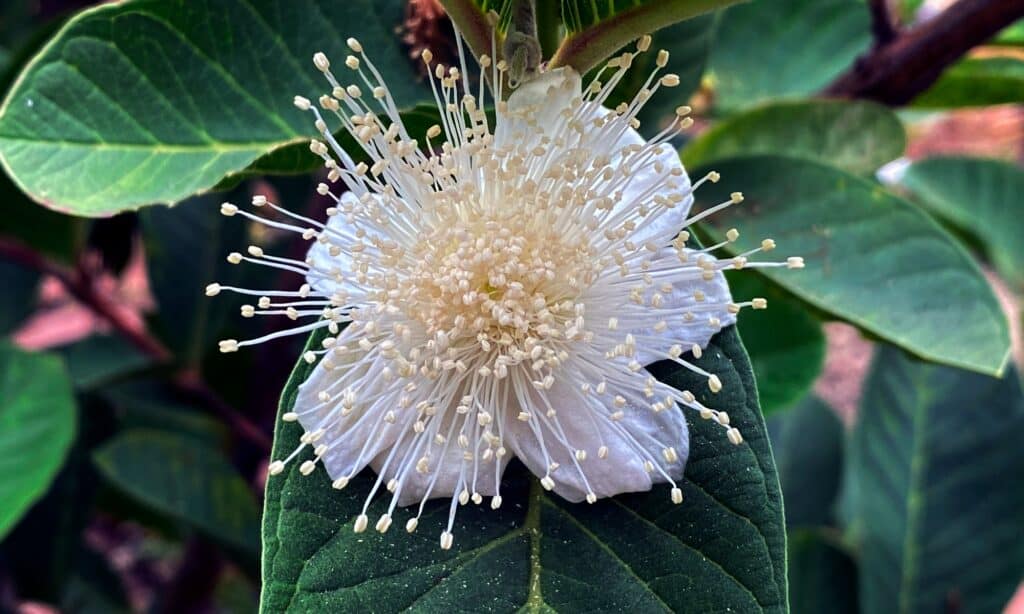
Guava flowers have multiple stamens.
©iStock.com/AdelMBautista-AdelsFotos
Why Do Extinct Fruits Matter?
We have lots of fruit, so why does it matter if some go extinct?
Having a diverse range of fruit plants is important because it strengthens the ecosystem. A wide variety of crops exchanging their genes makes our food system more resilient to disease and climate change.
Modern methods of food production favor only a few types of fruit because they grow effectively and efficiently. However, if they developed a disease we would be in trouble because that fruit is so heavily relied on to feed the population. This article in Nature Ecology and Evolution journal lists 600 plants that have recently become extinct.
Scientists also think that because we are breeding out bitter fruits in favor of sweet fruits (because that’s what people buy!) compounds that create bitterness are much less prevalent. Botanists think bitter compounds protect plants from pests. To deal with these pests we have to use pesticides that harm our pollinators and threaten our food supply.
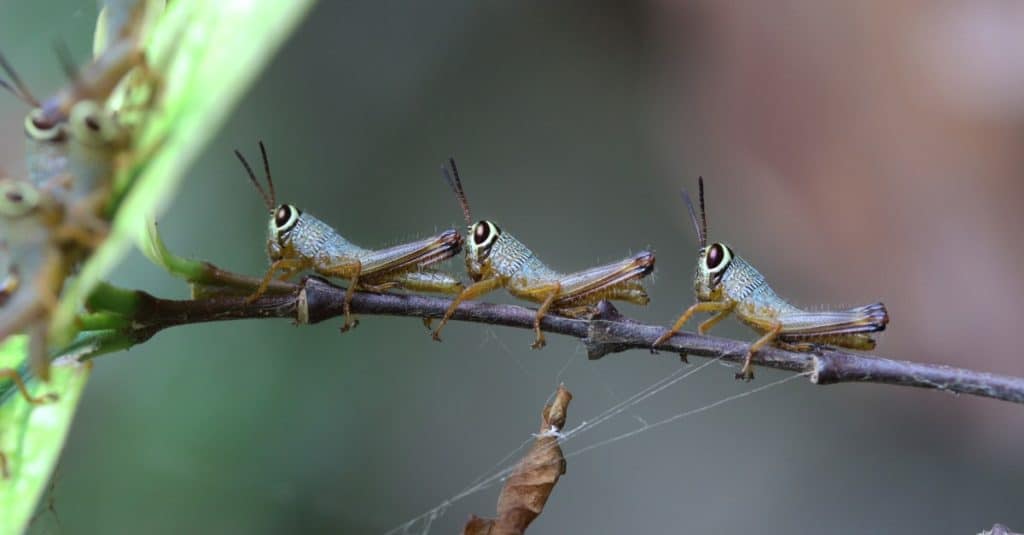
Bitter compounds help keep fruit plants safe from pests.
©K Abejuela/Shutterstock.com
Does Fruit Extinction Damage Eco-Systems?
Yes, plant extinction endangers ecosystems.
It lowers cross-pollination and the potential for new, stronger fruits to emerge such as the grapefruit which was a natural ‘in the wild‘ cross between an orange and a pomelo.
Also, when fruiting plants disappear, the animals that relied on them become vulnerable. Take the eelgrass limpet for example. It went extinct in the 1930s when its eelgrass habitat was badly damaged by disease.
That completes our list of 7 extinct fruits. Some plants died out due to climate change a long time ago. Others became extinct due to deforestation, or they were left to die out because they weren’t as reliable as commercial varieties. Either way, it’s a loss to Earth’s ecosystem and a trend that is worrisome.
Summary of 7 Extinct Fruits
Here’s a recap of 7 fruits that are extinct or critically endangered in the world:
| Number | Fruit | Extinction Status |
|---|---|---|
| 1 | Ansault Pear | Became extinct in the early 20th century as unreliable growers |
| 2 | Taliaferro Apple | Cultivated by Thomas Jefferson at his estate in Virginia; fruit experts believe it died out in the estate |
| 3 | Madagascar Banana | Critically endangered due to deforestation and climate change |
| 4 | Murray’s Plum | Discovered in 1928 but not seen since |
| 5 | Judean Date Palm | Extinct because of climate change |
| 6 | Kalimantan Mango | Extinct in the wild since 1998 but still cultivated in private |
| 7 | Jamaican Guava | Last known wild plant recorded in 1976 in Jamaica |
The photo featured at the top of this post is © nutt/Shutterstock.com
Thank you for reading! Have some feedback for us? Contact the AZ Animals editorial team.






